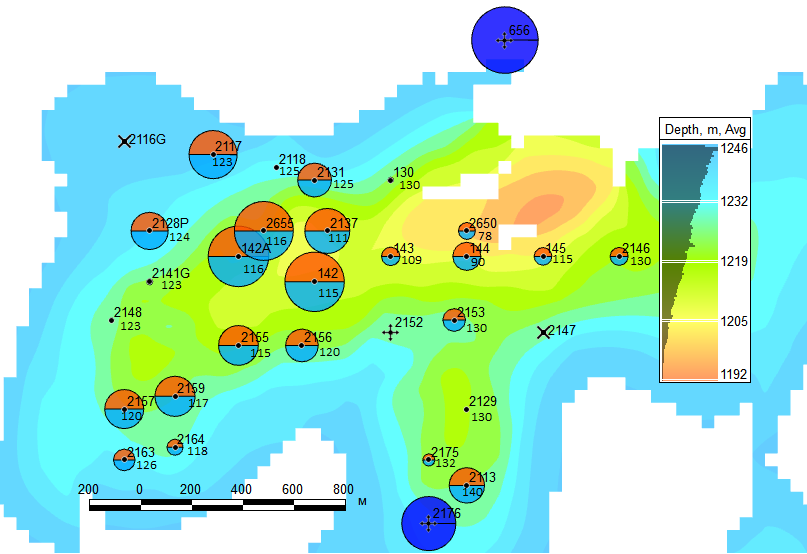
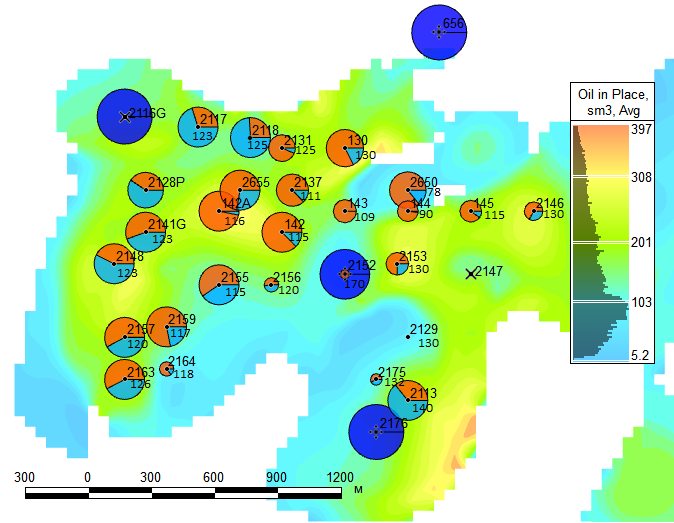
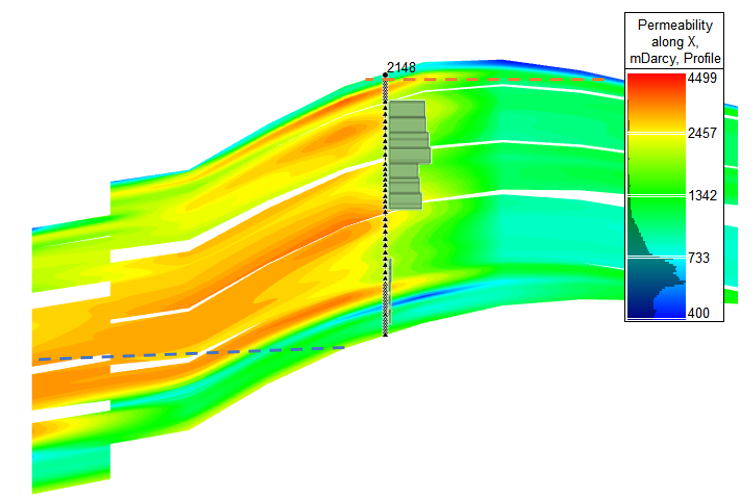
Fig. 1. Production History Map
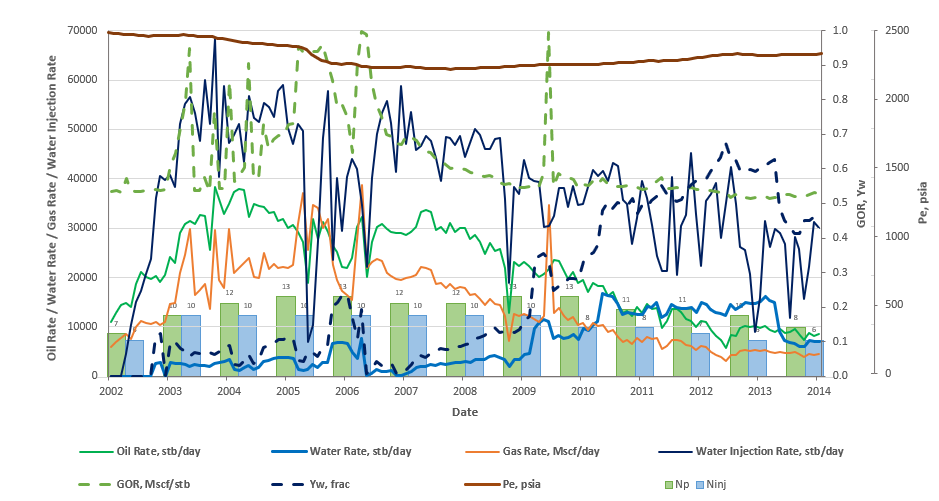
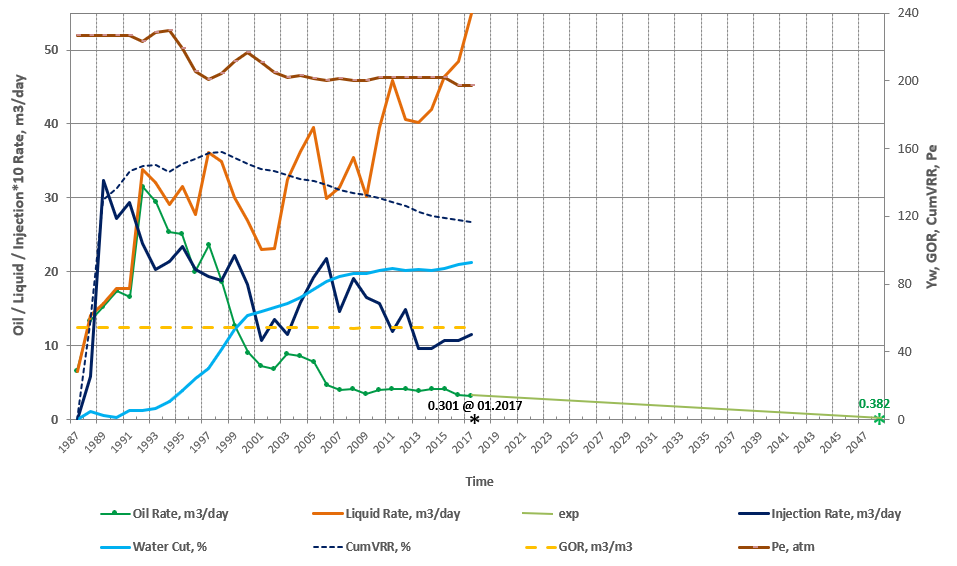
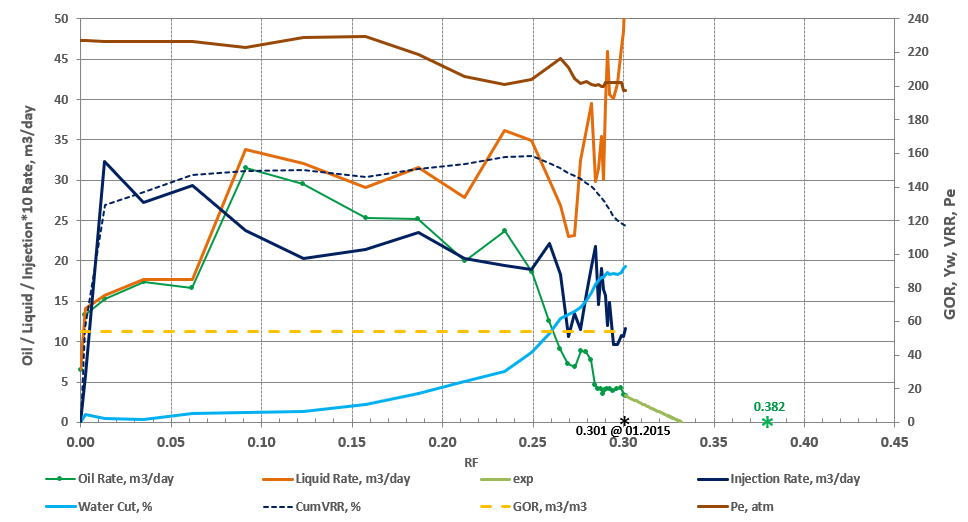
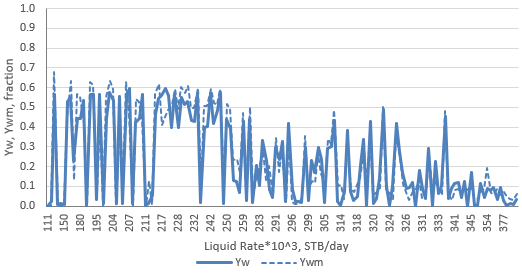
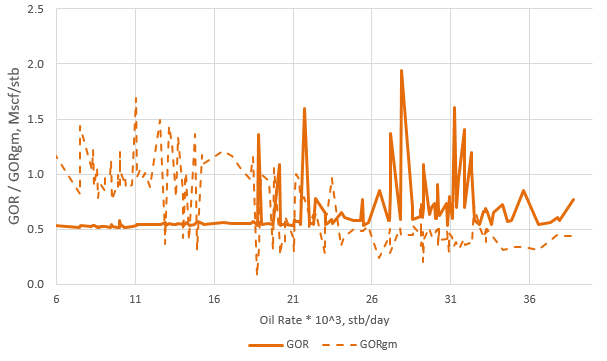

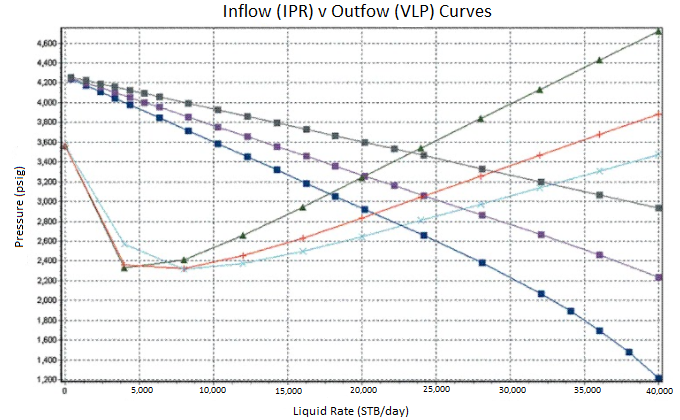

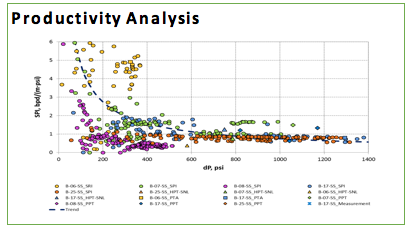
Fig. 10. Well Performance Analysis (VFP + IPR)
Primary Production Analysis is the specific workflow and report template on Primary Well & Reservoir Performance Indicators.
Primary Production Analysis is built around production data against material balance and require current FDP volumetrics, PVT and SCAL models.
It includes well-by-well diagnostics and gross field diagnostics, but may be extended to sector-by-sector diagnostics.
Primary Production Analysis includes the following metrics:
| Metric name | Diagnostic plots | Objectives | |
|---|---|---|---|
| 1 | Production History Map | Background = Structure Bubbles = qo, qg , qw, qinj Number = CurVRR, Pe | Production Distribution Overview |
| 2 | Recovery Map | Background = STOIIP Bubbles = Qo, Qg , Qw, Qinj Number = CumVRR, Pe | Recovery Distribution Overview |
| 3 | Cross-section | Background = STOIIP & Structure Bubbles = VRR Number = Pe , Pem | |
| 3 | Production History Graphs | Left Axis = qo, qg , qw, qinj, Rigth Axis = Yw, GOR, Pe , Np, Ninj Hor Axis = Elapsed Time | Production History Overview |
| 4 | Decline Curve Analysis | Left Axis = qo1, qliq1, qinj1, Rigth Axis = Yw, GOR, VRR, Pe Hor Axis = Elapsed Time | Production Forecast |
| 5 | Recovery Diagnostic | Left Axis = qo1, qliq1, qinj1 Rigth Axis =Yw, GOR, VRR, Pe, Pem Hor Axis = RF | Estimate recovery efficiency and pressure decline |
| 6 | Watercut Diagnostic | Left Axis = Yw, Ywm Hor Axis = qliq | Check for water balance and thief water production |
| 7 | GOR Diagnostic | Left Axis = GOR, GORgm Hor Axis =qo | Check for gas balance and thief gas production |
| 8 | Injection Efficiency Diagnostics | Left Axis = PIR , PIRm Hor Axis = Yw | Evaluate WI efficiency |
| 9 | Well Performance Analysis | Left Axis = Pwf_IPR , Pwf_VLP Hor Axis = qo | Check for the optimal production/injection target |
| 10 | Productivity Index Diagnostic | Left Axis = JPI, JPIm Hor Axis = dP = Pwf - Pe | Check for PI dynamics |
Below is the list of the production properties involved in the above metrics.
| Property Abbrevy | Property Name | Formula | ||
|---|---|---|---|---|
| VRRcum | Cumulative Voidage Replacement Ratio |
| ||
| VRRcur | Current Voidage Replacement Ratio (month over month) |
| ||
| RF | Recovery Factor |
| ||
| Yw | Watercut (production) |
| ||
| Ywm | Watercut (proxy-model) |
| ||
| GOR | Gas-Oil Ratio (production) |
| ||
| GOR_m | Gas-Oil Ratio (proxy-model) |
| ||
| qLIQ | Liquid rate |
| ||
PIR | Production Injection Ratio (production) |
| ||
| PIRm | Production Injection Ratio (model) |
| ||
| JO | Oil Productivity Index |
| ||
JPI | Total Productivity Index (production) |
| ||
| JPIm | Total Productivity Index (model) |
|
|
|
|
|
|
Fig. 1. Production History Map | Fig. 2. Recovery Map | Fig. 3. Cross-section & PLT, permeability, GOC, OWC |
|
|  |
| Fig. 4. Production History Graphs. | Fig. 5. Decline Curve Analysis | Fig. 6. Recovery Diagnostic |
 |  |  |
| Fig. 7. Watercut Diagnostic | Fig. 8. GOR Diagnostic | Fig. 9. Injection Efficiency Diagnostics |
 |
|  |
Fig. 10. Well Performance Analysis (VFP + IPR) | Fig. 11. Productivity Index Diagnostic | Fig. 12. Injectivity Index Diagnostic |
|
| |
Fig. 1. Production History Map | Fig. 2. Recovery Map | Fig. 3. Cross-section & PLT |
| Fig. 4. Production History Graphs | Fig. 5. Decline Curve Analysis | Fig. 6. Recovery Diagnostic |
 |  |  |
| Fig. 7. Watercut Diagnostic | Fig. 8. GOR Diagnostic | Fig. 9. Injection Efficiency Diagnostics |
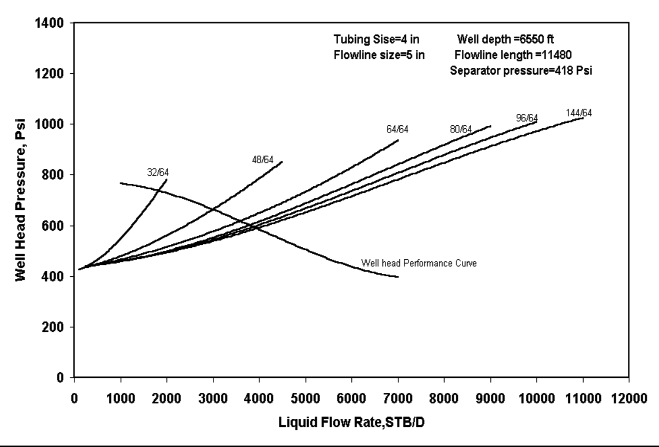 |
| |
| Fig. 10. Well Performance Analysis (VFP + IPR) | Fig. 11. Productivity Index Diagnostic | Fig. 12. Well Completion & PLT |
|
| |
Fig. 1. Production History Map | Fig. 2. Recovery Map | Fig. 3. Cross-section & PLT |
| Fig. 4. Production History Graphs | ||
 |
| |
| Fig. 10. Well Performance Analysis (VFP + IPR) | Fig. 11. Productivity Index Diagnostic | Fig. 12. Well Completion & PLT |